

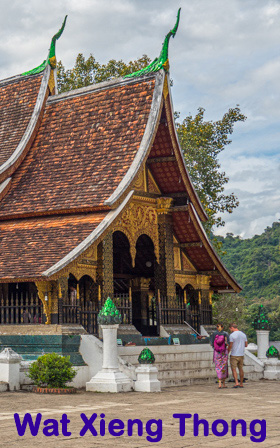
|
Wat Xieng Thong is the oldest and arguably the most beautiful Wat in Luang Prabang. Built, between 1559-1560, during the reign of King Setthatathirath, it stands at the tip of the Luang Prabang Peninsula on the confluence of the Mekong and Nam Khan rivers. It was here where Laotian Kings were crowned, monks and laity worshiped. Also serving as a gateway to the city for dignitaries, it remained the private property of the Royal family until 1975, when the Lao People's Democratic Republic was established. Today monks and laity still worship and the Wat is a major gathering point for Buddhist festivals. |
Entering the grounds, from the Mekong River side, the first sight that captured my attention was the nine low cascading roofs of the Sim. The Sim is the main congregation hall of a Laotian temple. The small golden pagodas at the center of the roof is the Dok So Fa. How eleborate it is signifies the relative importance of a Laotian temple.
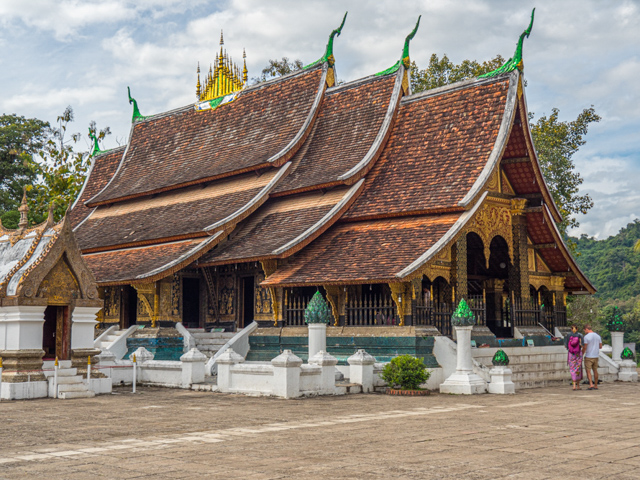
The main Buddha is a seating Buddha with it right hand touching the ground, the Earth Mother position. It is the Buddha calling the Earth rather than heaven to witness his merit.
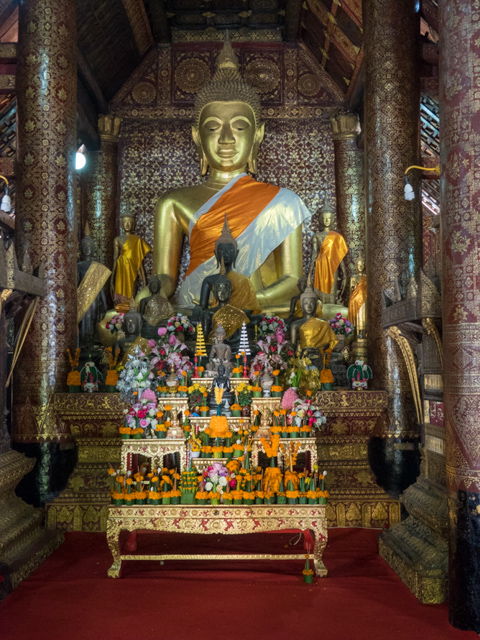
The Sim is extensively gold stenciled on both red and black backgrounds. Some of the gold on black stencils tell stories from Buddhist cosmology. Others depict scenes of animals and daly life.
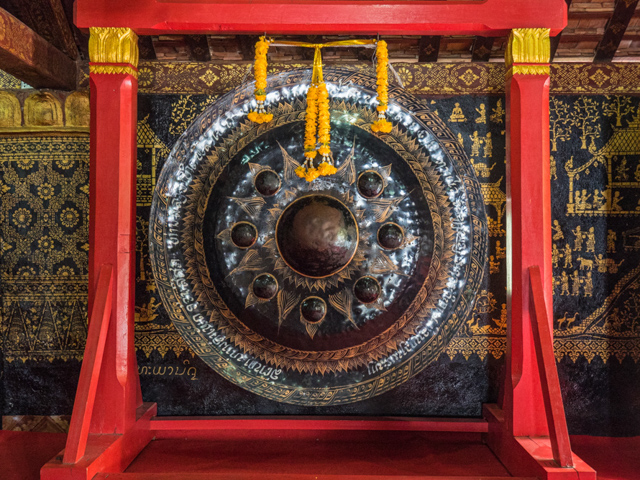
Venturing outside and making my way to the rear of the Sim revealed and extensively stenciled exterior cuminating in the Tree of Life at the back of the Sim. The Tree of Life is a glass moasic representation of the Bodhi tree, the tree Buddha was sitting under when he gained enlightenment.
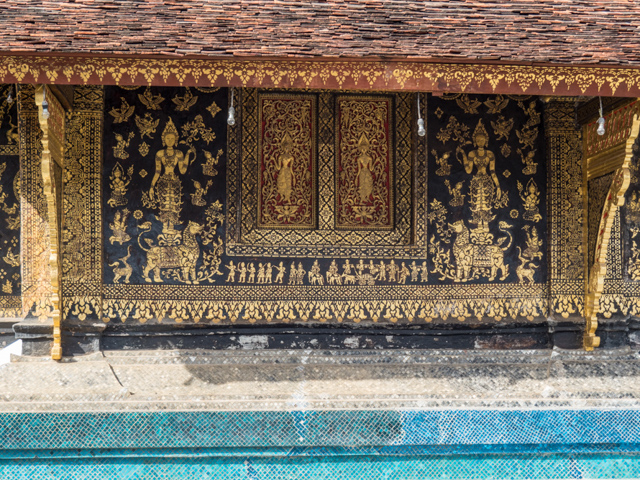
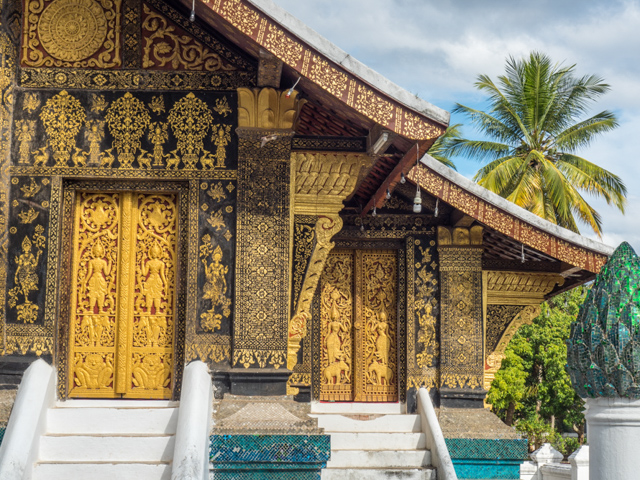
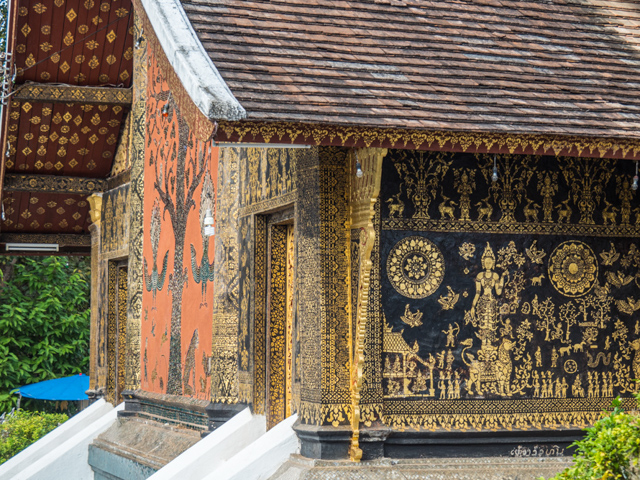
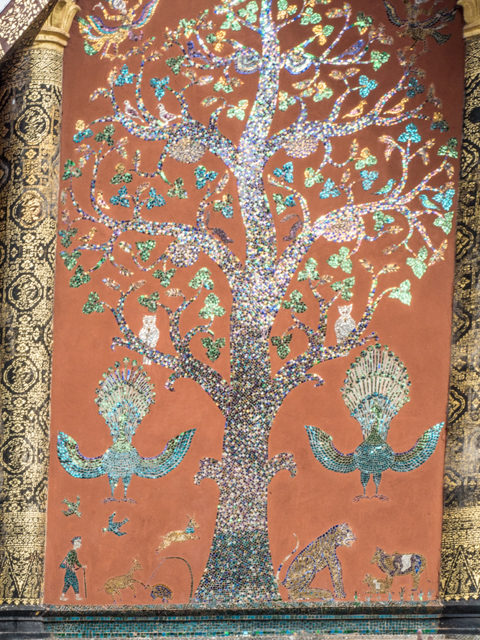
While standing in front of the Tree of Life directly behind is Ho Tai which was added to the Wat in 1880.
A pinkish building decorated with moasics displaying village life it houses the Tripitaka, Buddhist scripts.

Leaving Ho Trai I circle pass the Pavilion of the Seated Buddha to the Chapel of the Reclining Buddha.

Near to the rear of the Sim is the Chapel of the Reclining Buddha, sometimes known as the Red Chapel because of its red-pinkish moasic covered exterior.
The bronze reclining Buddha lying on its right hand side was crafted in 1569 on the orders of King Sai Setthathirat. Taken to France and displayed at the Paris Exhibition in 1931 it was returned to Laos and kept in Vietiane before being returned to Luang Prabang in 1964.


Mosaics were added in 1957 during a major restoration to commemmorate the 2500th anniversary of Buddha's death. They depict scenes of everyday life in a Loatian village.

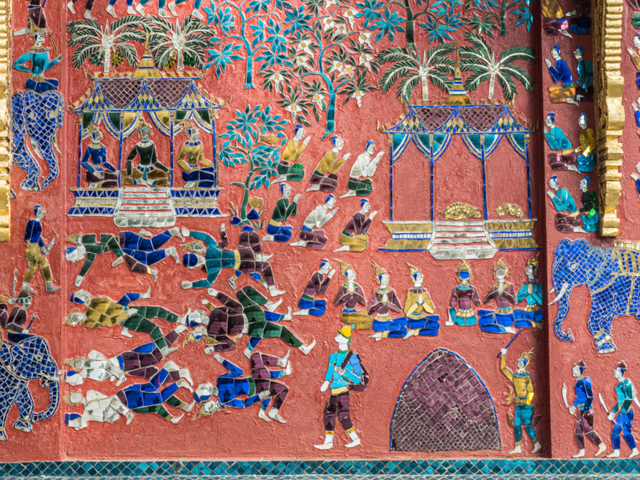
Heading back I come to the Funerary. Completed in 1962, it contains the ashes of King Sisavang Vong who died in 1959. It was built to hold the barges, elaborate long boats with a seven-headed naga prowl, used to carry urns containing the ashes of Royalty during their funeral procession.
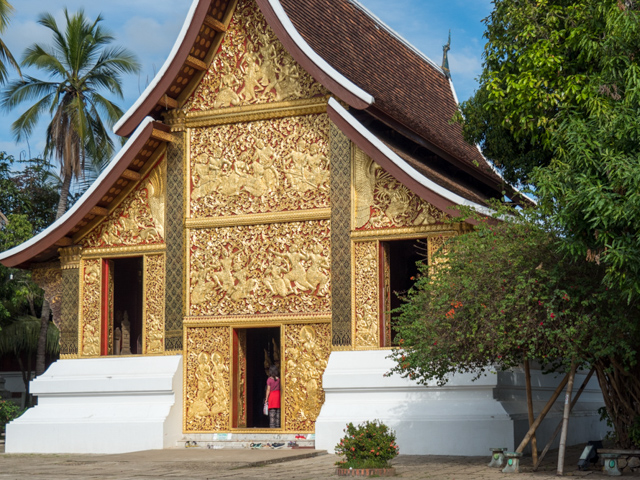

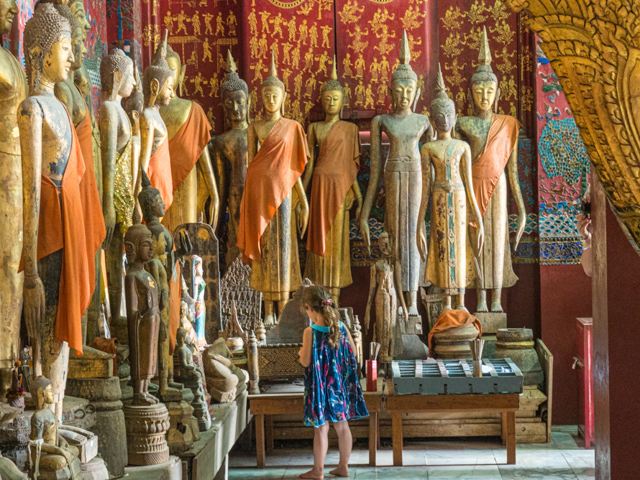
That Wat Xieng Thong has survived through the ages is a combination of restorations and luck. It was spared from the sacking of Luang Prabang in 1887 because the Black Flag Haw leader studied here as a monk and choose to use it as his headquarters.